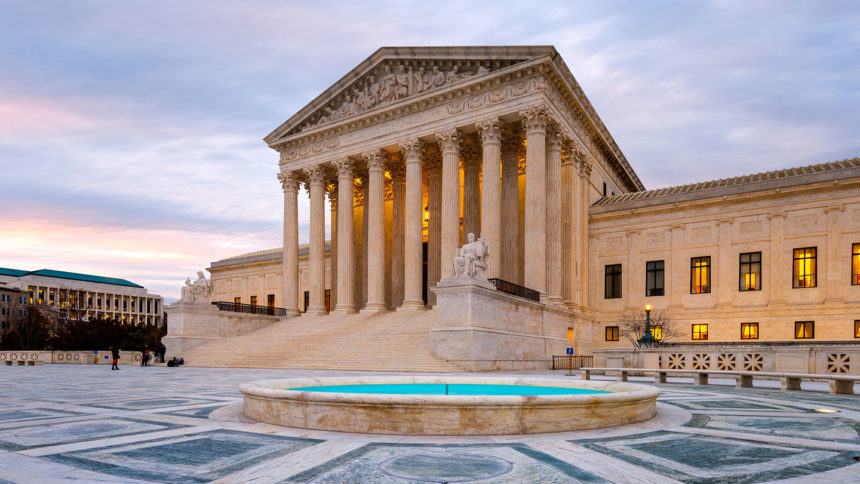
The Supreme Court will hear arguments Tuesday from federal lawyers seeking to dismiss more False Claims allegations in which the government chooses not to intervene, a move that would likely reduce the number of meritless cases providers face.
In United States, ex rel. Polansky v. Executive Health Resources, the Court must decide whether government attorneys can seek the dismissal of cases in which it doesn’t see enough merit to get involved, and what standards should be adopted to allow those dismissals.
The decision is a major one for nursing homes, whose owners are often targeted in high-dollar suits in which “relators,” or private individuals, attempt to bring a case on the government’s behalf alleging misuse of federal dollars. Relators stand to collect triple the amount of financial damage alleged, and the number of False Claims allegations has exploded since Congress established their right to sue in 1986.
Though most claims are deemed meritless by the government, which can either decide to help a relator with a case or pass on it, even those rejected for federal litigation can drag on for years or result in costly settlements. Last year, for instance, SavaSeniorCare settled what it called “unfounded” and longstanding allegations of billing Medicare for unnecessary therapy services. The company agreed to an $11.2 million agreement after spending 10 years and “several million dollars” on defense costs.
“Healthcare providers have been one of the primary targets of False Claims Act allegations for a long time and have borne the brunt of hundreds of meritless cases that get brought every year,” said Jeff Bucholtz, a former assistant attorney general in the Department of Justice’s Civil Division and a partner at King & Spalding.
High stakes for targeted providers
The government takes up only about 20% of so-called qui tam cases, typically leaving the relators in other cases to go it alone. As proof that the government’s decisions on whether to proceed are typically accurate, Bucholtz points out that 93% of all money recovered from qui tam litigation comes from government-supported cases.
“The unavoidable reality … is the large majority of declined qui tams lack merit, and so many of them are brought against healthcare providers,” Bucholtz told McKnight’s Long-Term Care News Friday. “Because the stakes are so high in False Claims Act litigation — treble damages, very high penalties — it’s very hard for healthcare provider or other defendants to litigate these cases. A lot of cases settle, despite being not very meritorious.”
In October, Bucholtz filed an amicus brief with the Court on behalf of the American Health Care Association, the American Hospital Association and the US Chamber of Commerce. He argues that “robust” dismissal authority is consistent both with the statutory purpose of the False Claims Act and the broader public interest.
In the case being reviewed by the justices, relator Jesse Polansky in 2012 alleged that Executive Health Resources, now operating as Optum360, improperly billed for inpatient services. The government investigated for two years but declined to intervene and tried to dismiss the case in 2019 to stop Polansky from proceeding.
“The Act allows private individuals like Polansky to sue on behalf of the United States as a way to further the government’s interests, not to frustrate them,” Bucholtz wrote in the brief on behalf of AHCA. “To ensure that the government’s interests take precedence … the Act allows the government to retain control over the suit brought in its name by … settling an action over the relator’s objections, or, as relevant here, dismissing the action over the relator’s objections.”
Justices should settle split decisions
The government has increased its pursuit of dismissals without intervening since 2018, when it issued a memo on the issue.
“The number of lower court opinions about what standard should be applied to such dismissals has also increased,” attorneys for Bradley Arant Boult Cummings LLP noted in a blog analyzing briefs filed by business, healthcare, pharmaceutical and medical technology organizations in support of the government.
“This case may resolve the circuit split on that issue, and it is sure to be closely watched by industry participants and FCA practitioners alike,” wrote Brad Robertson and Christine Levi.
With the rise in the number of False Claims cases, especially specious ones, and even the arrival on the scene of professional realtors who set up corporations to chase claims, Bucholtz thinks the court will be likely to side with the government. To do so would be to decide in the public interest, he added, noting steep costs to the healthcare system as well as increasing resources allotted by federal attorneys and the court system.
“I think the court will understand that just behind the legal issues are these important policy points and that it really would be anomalous to read this statue as giving the relator a veto over the executive branch itself about whether an enforcement action to execute the laws of the United States should be pursued,” Bucholtz said. “I think it would be in the public interest more broadly, and not just in the defendants’ interest, if the government dismissed more of these cases.”



